Gliding across the open ocean with tropical drink in hand, music engulfs you in the ambiance of your first blissful cruise vacation. You lounge on a sprawling deck chair and in that warm, sunny glow, you wonder why you didn’t go on a cruise sooner. Cruising is a popular way to travel that offers various themes, inclusive options, and even round-the-world destinations. And according to Reuters, cruise travel is only getting more popular, with trips being booked at record-setting levels around the world. Clearly, this mode of vacationing is a worthwhile adventure — otherwise people wouldn’t be flocking to the docks.
Still, cruising is a super-specific kind of travel. It can be intimidating to those who haven’t ventured on one before, especially considering how many embarrassing errors you can make during the trip. Don’t let this list talk you into never taking a cruise, though; a lot of these mistakes can be solved with some simple common sense or planning ahead.
From missing the departure time from an excursion port to showing up to dinner in inappropriate attire, there are rules cruisers must learn to avoid social faux pas. These are some of the most embarrassing mistakes among them. Keep them in mind as you plan your much-needed cruise vacation so you can have as much fun as possible.
Flying in or out too close to ship departures or arrivals
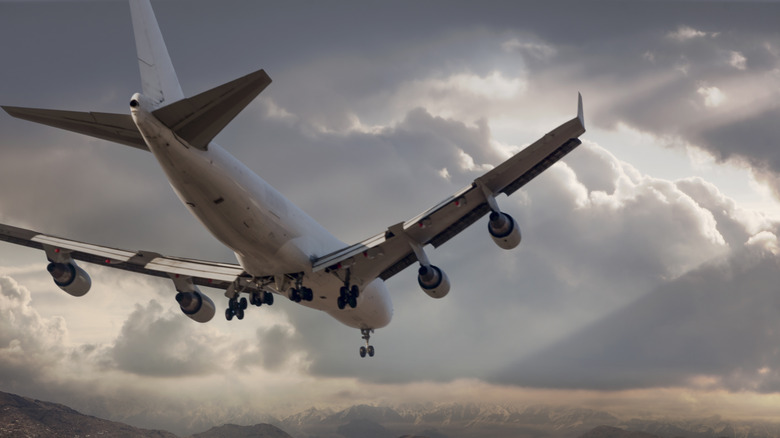
If there are cardinal rules to cruising, this one is near the top for sure. Flying in or out the same day your cruise arrives or departs is a big no-no. Any minor issue with arrival or departure times could derail your entire trip. No one needs an airport meltdown on their itinerary. Cruise lines will not refund your money if you miss your cruise due to flight issues, so it’s better to be cautious and fly the day before and after your ship departs and returns.
Your boarding or embarkation time is not optional. When it’s set, that’s the time you must be present to board — the cruise will not wait for you. Plan out when you’ll be flying out at the same time as booking your cruise to avoid ultra-expensive last-minute flight bookings.
Going above the one-day buffer, Stewart Chiron, aka The Cruise Guy, told Business Insider to consider even more time if you’re leaving an international port. Chiron recommends a few days to pad a cruise embarkation just in case anything goes wrong on your international flight(s), and you can combat the jet lag before you push off.
Not prioritizing the items in your carry-on bag if you utilize porters
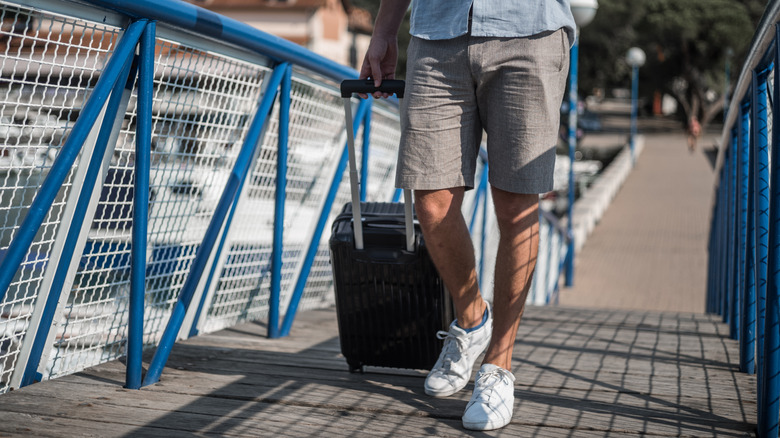
Like hotels, cruise ships have staff who will handle your luggage. You don’t have to utilize their services, though many cruisers do. If you hand your luggage to a porter to bring to your room, remember that it could be hours before you can reaccess those suitcases. In this case, you’ll want to keep a personal item or carry-on bag with you with anything you’ll need for the day. This isn’t much different from the typical travel rule of thumb to have everything you might need in an emergency in your personal or carry-on item.
When packing these bags, keep in mind what you’ll need for the first half day or so onboard the ship. You’ll want to pack medications, identification cards or passports, necessary travel documents, some spare clothes, sunscreen, and anything else you use on a regular, day-to-day basis. There’s also something to be said about only packing a carry-on bag and forgoing a checked bag altogether. If you only take a carry-on, you can save time and avoid the check-in counter at the airport as well as waiting for your luggage to arrive at baggage claim after you land.
Overpacking your luggage
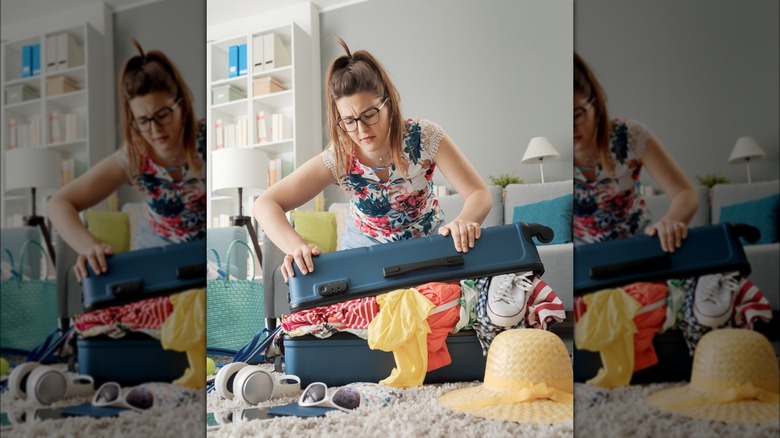
Stock-Asso/Shutterstock
It can be tempting to pack three outfits per day for a cruise. Of course, you want to have your ultimate, luxurious Kate Winslet moment aboard the ship, but keep in mind that “Titanic” ruminations aside, regular cruisers aren’t living a posh life — it’s more like the Leonardo DiCaprio experience. A regular cruise cabin, on average, is 167 square feet. Compared to the average hotel room, which is about 325 square feet, that’s tiny! When you overpack, you’re sacrificing the space of your quaint quarters for things you might not use, so you might want to follow our ultimate guide to perfectly packing for your cruise vacation.
You can avoid overpacking by bringing items that can pull double duty on your trip. For instance, a dressier swimsuit cover-up could also be a dress for evenings, or your accessories could be neutral and work with any of the outfits you pack. You can also sink-wash items like workout clothes to avoid packing athleisure wear for every day of your trip. The less you cram into your little stateroom, the more room you have to actually enjoy when you aren’t off exploring the ship.
Forgetting your passport
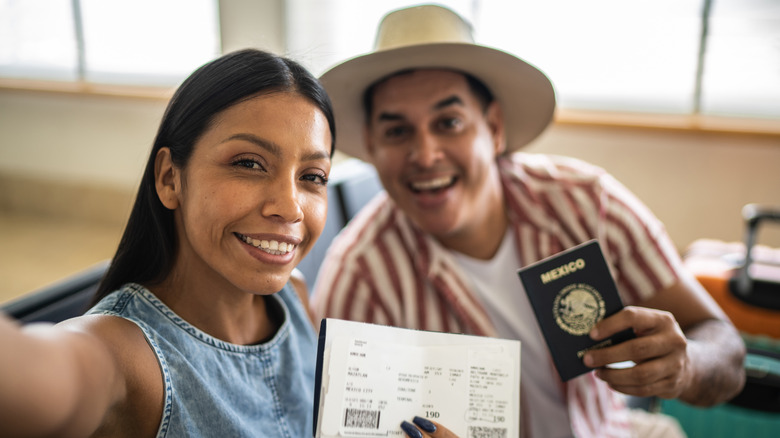
Fg Trade Latin/Getty Images
You don’t always need your passport when traveling by sea. After all, you might have picked one of these 11 places to go on a cruise that doesn’t require the travel document. But keep in mind that you will need identification to get on board the ship as you would an airplane — it just might not be your passport, depending on your itinerary. For instance, if you’re stopping in the Caribbean or Canada on a cruise, you may not need the identification booklet, though you will if the initial cruise departure or arrival is there.
To board a closed-loop cruise (which begins and ends at a U.S. port), you will need your birth certificate or certificate of U.S. naturalization, government ID for guests 16 and up, and your boarding pass. Handing over your identification is one of the things first-time travelers can expect when boarding a cruise.
Even if your cruise says a passport isn’t required, the U.S. State Department recommends bringing it with you anyway, in case you run into an unexpected medical evacuation, or if your cruise itinerary changes and you dock at an unplanned port. If you have your passport, you don’t need two forms of ID since it qualifies as both. On the other hand, your closed-loop cruise includes stops at foreign ports like Barbados or St. Barts, you will need your passport to explore them. Should you book a closed-loop cruise of the non-U.S. islands and forget your passport, the only port excursion you’ll enjoy is an island owned by the cruise company.
Not looking into what is included
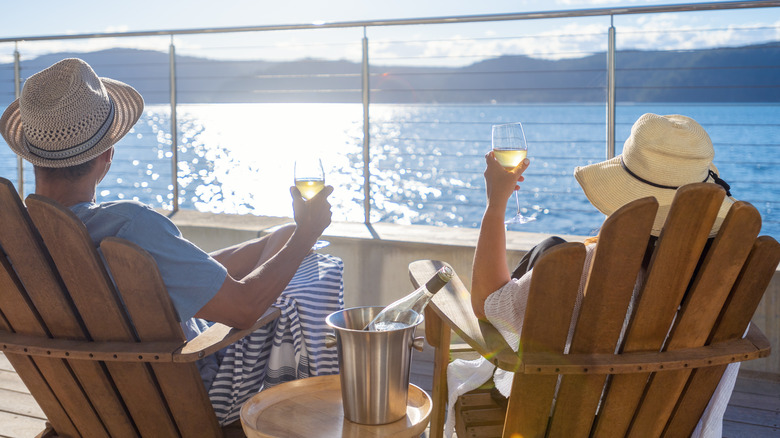
Courtneyk/Getty Images
It’s hard to imagine that cruises conjuring images of endless drinks and fun aren’t all-inclusive. But the fact is, many cruises have add-on options instead of a blanket all-inclusive nature. Little is more embarrassing (or expensive) than going on a cruise, ordering all the tasty beverages you can imagine, and getting stuck with a huge bill of a reminder that those cocktails weren’t actually part of the deal.
Cruises make bank on their add-ons like drink packages. That means newbie cruisers shouldn’t assume the cocktails are complimentary. Endless bevies aside, though, a handful of other amenities aren’t always included in a cruise — even if your meals are. You should always double-check whether or not the little things like room service, optional experiences at the port stops, and fitness classes are actually included in your package deal before you start racking up your tab.
The best way to avoid an embarrassing case of sticker shock with your tab(s) is to look into the inclusions for your particular cruise ahead of time. Doing this, particularly before booking, will allow you to make decisions about appropriate add-on packages based on your vacation needs. For some, that unlimited alcohol package might be a money saver compared to buying them a la carte, but for others, it isn’t a worthwhile investment at all.
Neglecting to book excursions ahead of time
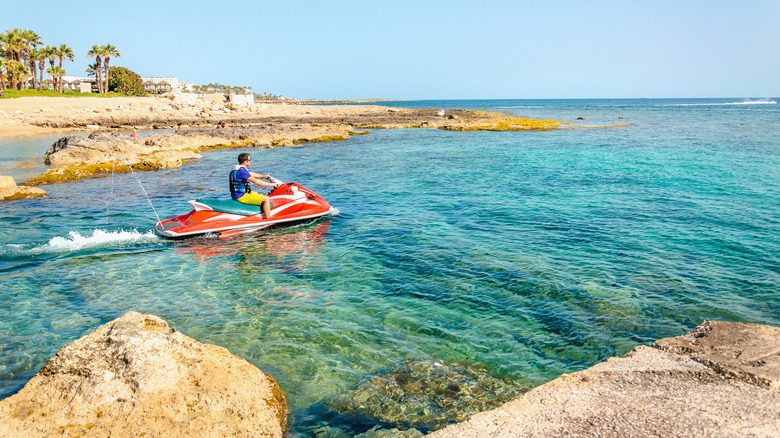
Anna Jedynak/Shutterstock
If you wait too long to book excursions, you’ll not only be less likely to get the ones you want, but you’ll probably get a worse deal. Booking your excursions early ensures you can have the experiences on your dream list. You don’t want to be stuck with the leftovers if you wait until embarkation day to try to secure excursion status.
It isn’t uncommon for experienced cruisers to book excursions months in advance. If there is something you really want to do, the sooner you can book it, the better. There’s a good chance that other people are also interested in the excursion, especially if it’s considered a popular option, or you’re cruising during peak tourist season for your specific destination(s).
Keep in mind that booking excursions isn’t absolutely necessary. When your cruise stops at ports of call, you can just enjoy the area instead of taking a tour or zipping around the ocean on a jet ski. Excursions or not, cruisers are welcome to visit ports, though a tour may be a better way to see a new town than just perusing it yourself.
Not knowing where your cabin is onboard

Lisa5201/Getty Images
While wandering aimlessly around the lido deck after downing your sixth margarita of the day is certainly embarrassing, that’s not what we’re talking about when it comes to knowing where your room is aboard your cruise ship. A major mistake new cruisers make is not selecting their room for themselves as part of the booking process.
One easy way to save a few bucks on a cruise is to let the cruise line randomly assign you your lodgings. When you do this, the cruise company can give you a room that no one else would want, and there’s a good chance you wouldn’t want it either. Newbie cruisers might not care where their stateroom is located — until they get onboard and realize it’s in the worst possible location.
Here’s the thing: If you do a random room assignment, you could end up in part of the ship that takes forever to get to. Or, if you are a seasick-prone traveler, you may end up in a section of the ship that’s less friendly to you. Experienced cruisers know that it is better to check out the layout of the ship and pick your room based on nearby necessities, for example, the elevator.
Forgetting to put your phone on airplane mode
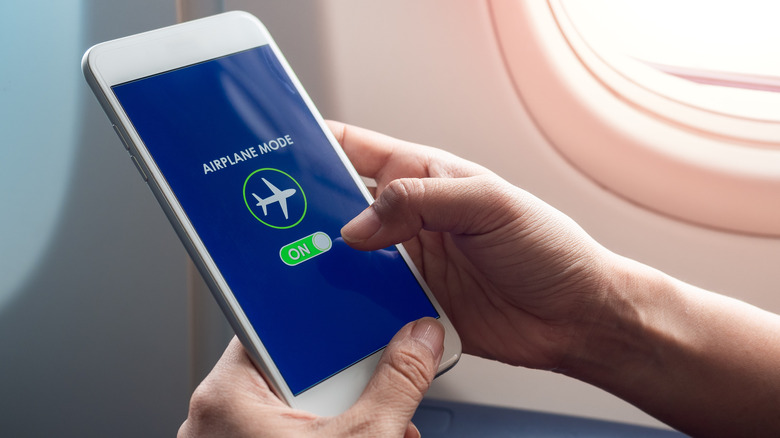
tete_escape/Shutterstock
Sharing those cute cruise pics constantly is tempting. You want everyone to know you’re having a good time. Unfortunately, part of being adrift at sea means your phone is just as adrift as you are. That means you need to turn your phone on airplane mode or you may get home to ridiculous roaming charges.
If the countries you visit on the cruise are included in your international data plan, most of these plans only apply when you are on land, not at sea — though it’s smart to check if your carrier might offer a cruise-specific data plan before you embark. Cruise lines also offer different Internet plans that you can purchase to keep yourself somewhat connected, and a few even provide plans that exclusively offer social media sites like Instagram and Facebook. Keep in mind that you can use Wifi while your phone is in airplane mode; you just can’t use your cellular plan to do things like make phone calls or any other action outside of your WiFi-enabled features.
Packing prohibited items

Jupiterimages/Getty Images
While the cruising population at large won’t know of your packing snafu, it can still be embarrassing to have your belongings confiscated. Scott Campbell, manager of cruise relations at AAA, told USA Today that some of the items cruise lines forbid are everyday things you wouldn’t imagine on the list.
Some of those confiscatable items include heating pads, clothes steamers, and even power strips unless they’re cruise-compliant. These items aren’t allowed because they pose a fire risk to the cruise ship and everyone aboard. You’re also not allowed to bring guns, anything that’s potentially a weapon, or your own booze. The exception, for some cruise lines, is a single .75-liter, sealed bottle of wine per passenger of legal drinking age.
Drone aficionados should also be aware that drones and other flying devices are prohibited. While technically allowed onboard, they aren’t allowed to be used while on the ship. Depending on the ports of call, you may also not be able to use them on land during your vacation.
Not looking into non-ship offered excursions

Flavio Vallenari/Getty Images
Although booking an excursion through the cruise company may be more convenient, it isn’t the only way to enjoy time at port. You can book excursions yourself, which offer you a wider range of things to do and can potentially save you money. Third-party tours not associated with the ship are often cheaper than the ones offered by the cruise line. While booking through your cruise line can be convenient, if not only because the tours depart from and return to the ship, keep in mind that it’s not your only option.
There are a handful of activity types that you’re frequently better off booking yourself with a local company or doing directly on your own. These excursions include museums, watersports, and small group tours, to name a few. However, if you’re planning on going further away from the docking area, consider the cruise excursion first to ensure you aren’t late for departure.
A bonus to booking a tour on your own (besides saving some money) is that you may be able to personalize the experience to your specific tastes or interests, such as opting for a smaller, customizable tour that focuses on a particular area of a given port city, or giving yourself more time to explore artsy neighborhoods or a particular cuisine you’ve been eyeing.
Booking a cruise in the off-season
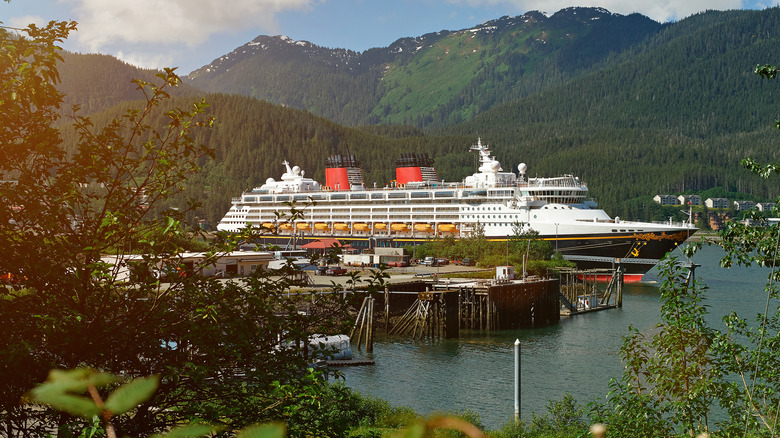
Dimarik/Getty Images
Sometimes, traveling in the off-season can be an incredible adventure. Other times, it can be among the worst mistakes a traveler makes. After all, you don’t want to miss all of your ports of call because of inclement weather, and you definitely don’t want to book a whale-watching cruise during a time of year when there won’t be any to see. Booking a cruise willy-nilly is a mistake you don’t want to make, but if you do find yourself on a cruise with itinerary changes due to poor weather or other uncontrollable factors, there are some travel agent-approved tips for handling the situation.
As you plan ahead for your next vacation, it’s possible that you could come across an incredible deal for a September Caribbean cruise. Don’t be so quick to book your discount trip — there’s a reason it’s a deal. September is still heavy hurricane season for the region, which runs from June through September, though hurricanes can of course occur outside those specific months, too. While you can’t really predict when big storms or other weather phenomena might happen, planning your cruise outside of the bad weather zone is always a good idea.
The off-season period is, of course, dependent on the area you’re visiting. For instance, the best times to book an Alaskan cruise if you want warmer days are mid-June to mid-August, but the best time to see the Northern Lights by sea is in September. So, some destinations have multiple best times depending on what you want to do and see. Your vacation game plan will dictate the best time of year for your seafaring adventure.
Understanding your cruise’s attire

Aja Koska/Getty Images
Cruises often elicit thoughts of folks in Tommy Bahama shirts, flip-flops, and resort attire in general. While that’s fine for cruising in general (particularly in the daytime), cruises with dress codes have them for a reason. Don’t show up to a dressy dinner onboard in your cut-offs and a bikini top — you can be refused service, though cruisers should note that even some of the attire particulars have changed in the last few years. It’s worth checking in with your cruise company ahead of time about any required dress codes.
“It really has gotten more and more relaxed as we’ve gone along, especially after the pandemic,” Valerie Dorsey, franchise owner and travel adviser at Cruise Planners, told USA Today. “I’ve seen people dress way up, meaning tuxedos, evening gowns, beautiful clothing, down to ‘I’m just going to dinner at Red Lobster tonight.’ I think it’s all over the place.”
All cruise lines have their own regulations regarding attire for certain meals or restaurants. But for smart casual situations, you can generally assume that things like swimwear, hats, tank tops, and flip-flops are a no-go. If in doubt, consider whether or not it could be considered beachwear. If it is, it’s best to choose something else.
Almost miss your port departure
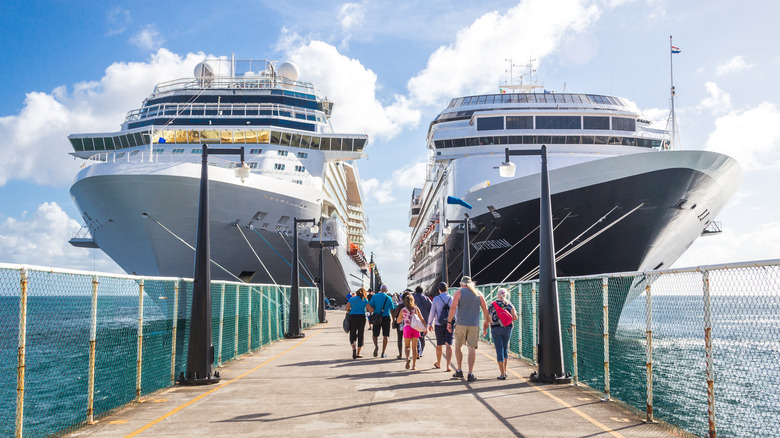
Mariakray/Getty Images
Pier runners are hilarious but also fear-inducing. Cruise goers gather on the deck to observe folks booking it back to the ship before it departs the port, though the ship will not hesitate to leave pier-runners behind if they’re late for the call time. Departure times wait for no one. Pier-runners are such a well-known occurrence that you’ll feel second-hand cringe from this can’t-miss moment that happens on every cruise.
Part of the reason cruise ships are so strict about their departures from ports is that they pay for docking there. If guests are off on excursions they booked themselves and they fail to return on time, they’ll be stranded. However, if you book an excursion with the cruise line and the tour is going to cause you to miss the departure time, the ship will wait for you — another pro-tip you’ll want to keep in mind when planning all the facets (and mistakes to avoid) of your next cruise.

